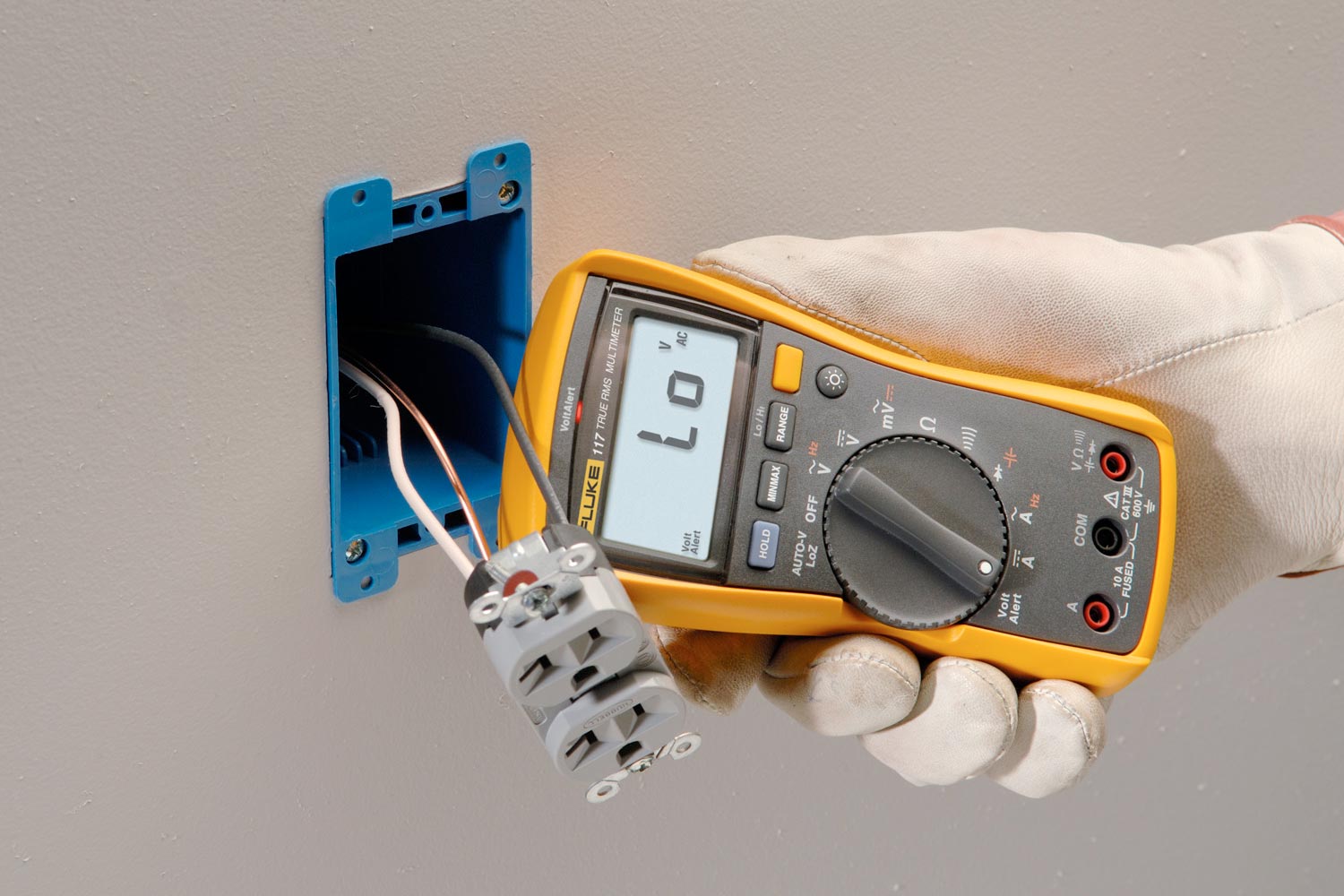By measuring hot-neutral voltage, neutral-ground voltage and hot-ground voltage you are well on your way to answering these questions:
- Is the outlet wired incorrectly?
- Is the branch circuit too heavily loaded?
- Do sensitive electronic loads have the voltage they need?
These three measurements, all taken quickly at one outlet, provide you with a solid understanding of the building's electrical supply.

Testing a three-slot receptacle for grounding polarity
Incorrectly wired receptacles are not uncommon. A three-slot receptacle has a hot-slot (short), a neutral slot (long) and a grounding slot (U-shaped). Are the hot (black) and neutral (white) wires reversed? Are the neutral and ground (green) wires reversed or shorted?
These conditions can go undetected for a long time. Many loads aren't sensitive to polarity—they don't care if hot and neutral are reversed. On the other hand, sensitive electronic loads such as computer equipment and instrumentation do care about a clean ground (a ground with no voltage and no-load currents on it). A single reversed neutral and ground can compromise the entire ground system.
So, what do you find?
Hot-neutral is the load voltage. Voltage should read about 120 V (typically 115 V to 125 V). You measure exactly 118.5 V.
- Neutral ground is a voltage drop (also called IR drop) caused by load current flowing through the impedance of the white wire. Let's say you measure 1.5 V.
- Hot ground can be thought of as the source of voltage available at the receptacle. You read 120.0 V. You note that hot-ground is higher than hot-neutral. In fact, hot-ground is equal to the sum of the hot-neutral and neutral-ground voltages.
Are these readings normal? Is the outlet wired correctly?
How to detect mis-wired receptacles
The most common mis-wiring occurs if hot and neutral are switched, or if neutral and ground are either switched or shorted. How do you spot these conditions?
- Measuring hot-neutral by itself does not tell you if they've been switched. You have to measure neutral-ground or hot-ground. If neutral-ground voltage is about 120 V and hot-ground is a few volts or less, then hot and neutral have been reversed.
- Under load conditions, there should be some neutral-ground voltage - 2 V or a little bit less is pretty typical. If neutral-ground voltage is 0 V - again assuming that there is load on the circuit - then check for a neutral-ground connection in the receptacle, whether accidental or intentional.
- To check if neutral and ground are switched, measure hot-neutral and hot-ground under load. Hot-ground should be greater than hot-neutral. The greater the load, the more the difference. If hot-neutral voltage, measured with load on the circuit, is greater than hot-ground, then the neutral and ground are switched. This is a potential safety hazard and the condition should be corrected immediately.
Hot-ground reading should be the highest of the three readings. The ground circuit, under normal, non-fault conditions, should have no current and therefore no IR drop on it. You can think of the ground connection as a wire running back to the source (the main panel or the transformer), where it's connected to the neutral. On the receptacle end of the ground path, where the measurement is being made, the ground is not connected to any voltage source (again, assuming there is not a fault). So the ground wire is like a long test lead back to the source voltage. When there is a load connected, the hot-ground receptacle source voltage should be the sum of the hot-neutral voltage (the voltage across the load) and the neutral-ground voltage (the voltage drop on the neutral all the way back to its connection to the ground circuit).